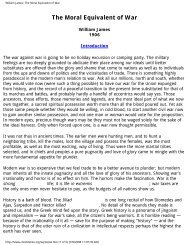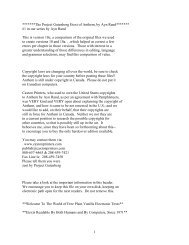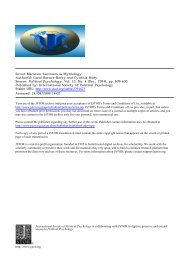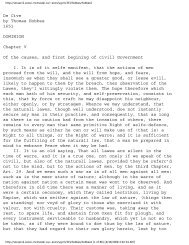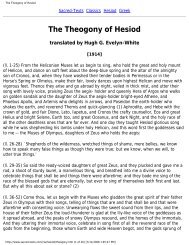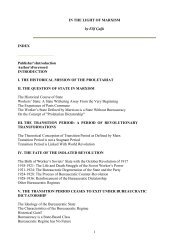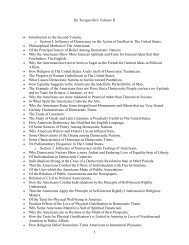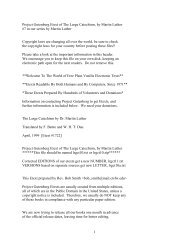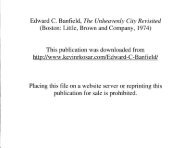Thomas Jefferson: A Manual of Parliamentary Practice
Thomas Jefferson: A Manual of Parliamentary Practice
Thomas Jefferson: A Manual of Parliamentary Practice
You also want an ePaper? Increase the reach of your titles
YUMPU automatically turns print PDFs into web optimized ePapers that Google loves.
<strong>Thomas</strong> <strong>Jefferson</strong>: A <strong>Manual</strong> <strong>of</strong> <strong>Parliamentary</strong> <strong>Practice</strong><br />
then be suppressed by the previous question, or may be committed, or amended.<br />
The 3d class is subject to the same observations as the 2d.<br />
The 4th class. Amendment <strong>of</strong> the main question first moved, and afterwards the previous<br />
question, the question <strong>of</strong> amendment shall be first put.<br />
Amendment and postponement competing, postponement is first put, as the equivalent<br />
proposition to adjourn the main question would be in Parliament. The reason is, that the<br />
question for amendment is not suppressed by postponing or adjourning the main question,<br />
but remains before the House whenever the main question is resumed: and it might be that<br />
the occasion for other urgent business might go by, and be lost by length <strong>of</strong> debate on the<br />
amendment, if the House had it not in their power to postpone the whole subject.<br />
Amendment and commitment. The question for committing, though last moved, shall be first<br />
put: because, in truth, it facilitates and befriends the motion to amend. Scobell is express.<br />
"On a motion to amend a bill, any one may notwithstanding, move to commit it, and the<br />
question for commitment shall be first put." Scob. 46.<br />
We have hitherto considered the case <strong>of</strong> two or more <strong>of</strong> the privileged questions contending<br />
for privilege between themselves, when both were moved on the original or main question;<br />
but now let us suppose one <strong>of</strong> them to be moved, not on the original primary question, but on<br />
the secondary one: e.g.<br />
Suppose a motion to postpone, commit or amend the main question, and that it be moved to<br />
suppress that motion by putting a previous question on it. This is not allowed: because it<br />
would embarrass questions too much to allow them to be piled on one another several stories<br />
high; and the same result may be had in a more simple way, by deciding against the<br />
postponement, commitment or amendment. 2 Hats. 81, 2, 3, 4.<br />
Suppose a motion for the previous question, or commitment, or amendment <strong>of</strong> the main<br />
question, and that it be then moved to postpone the motion for the previous question, or for<br />
commitment, or amendment <strong>of</strong> the main question. 1. It would be absurd to postpone the<br />
previous question, commitment or amendment alone, and thus separate the appendage from<br />
its principal. Yet it must be postponed separately from its original, if at all: because the 8th<br />
rule <strong>of</strong> Senate says, that when a main question is before the House, no motion shall be<br />
received but to commit, amend, or pre-question the original question, which is the<br />
<strong>Parliamentary</strong> doctrine also. Therefore the motion to postpone the secondary motion for the<br />
previous question, or for committing or amending, cannot be received. 2. This is a piling <strong>of</strong><br />
questions one on another, which, to avoid embarrassment, is not allowed. 3. The same result<br />
may be had more simply, by voting against the previous question, commitment or amendment.<br />
http://www.constitution.org/tj/tj-mpp.htm (38 <strong>of</strong> 70) [4/14/2008 6:37:46 PM]



